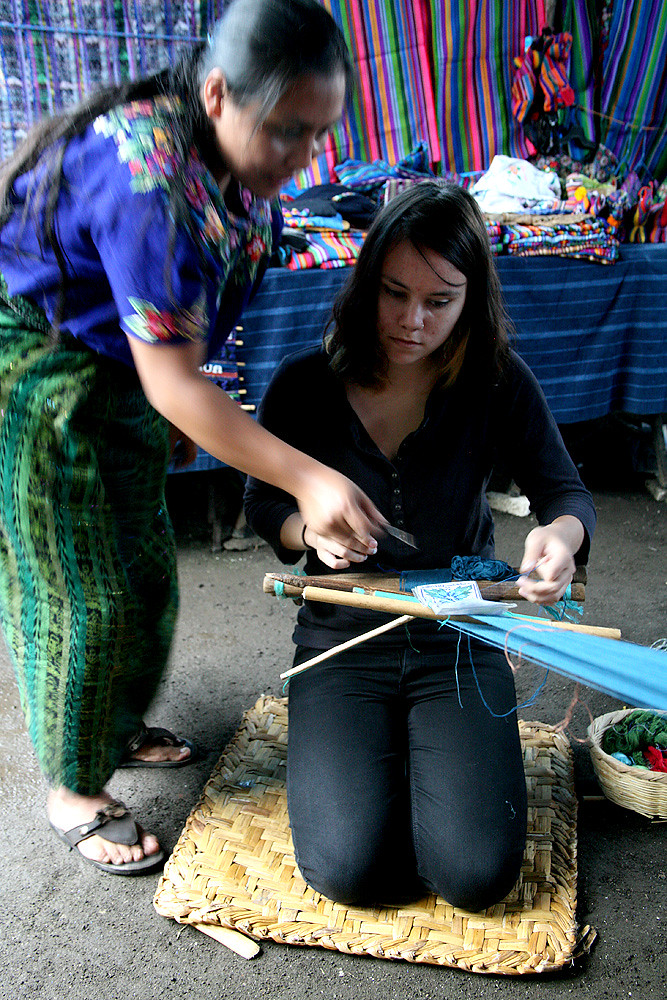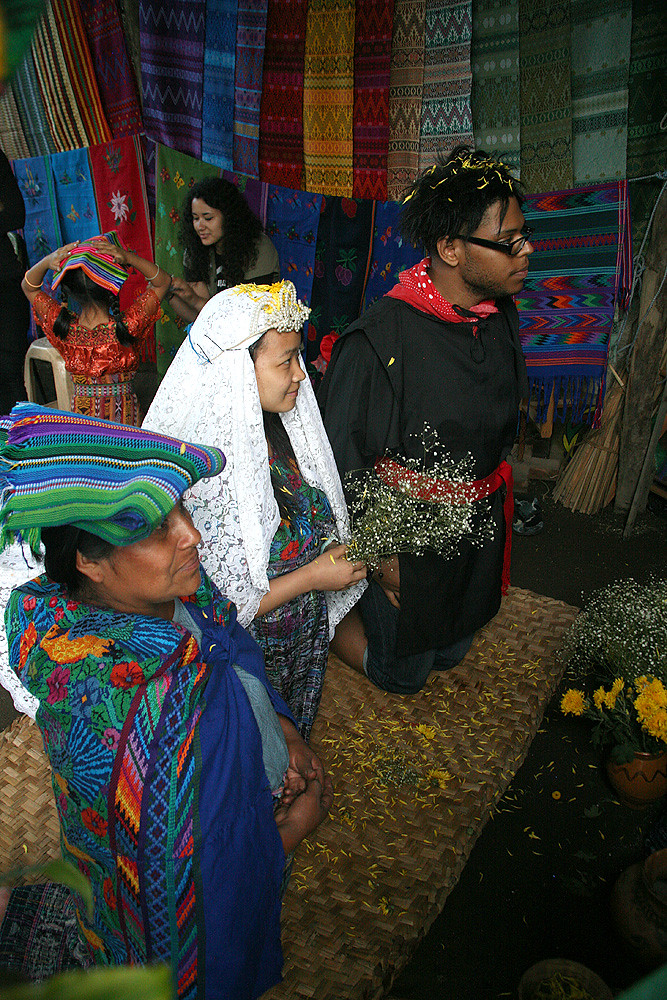During the spring semester course at Parsons, Designing Collaborative Development, our student team prototyped ideas they felt could benefit the group of artisan women in Santiago Zamora. The overarching idea was to promote their village as a tourist destination with a series of activities and workshops that the group would run for tourists.
Upon our arrival in Santiago Zamora last Friday we learned that the group already has such a program so we thought the next step should be to experience what they already offer and then figure out how we could build on their existing program, offer them our constructive criticism, and support what they have already designed (an ideal way to integrate our suggestions into the workings of the cooperative.)
Thus, Monday afternoon, we arrived to Santiago Zamora, not as the team from DEED, but as a group of tourists. This photo essay describes the wonderful 4-hour program they had prepared for us.


(The photo essay continues, click the link below.)



A lovely activity which we did not capture in photography was hearing about their natural medicines. They had picked from their local plants, including lemongrass, basil, and hibiscus, and explained to us which they used for which malady (fever, stomach ache, and cramps.)


All in all, it was a lovely experience. Some of our feedback for them when we return on Wednesday will be regarding the price (they currently only charge 40 quetzales, about $5, which we think does not cover the cost of the activities), the fact that they had us try the weaving on the most complicated design possible (not great for beginners!) and finally, the issue with language (a definite need to factor in the cost of a translator for groups who don’t speak spanish.)
How much would you pay to spend 3 or 4 hours with a Mayan women’s cooperative engaged in these kinds of activities?
2 thoughts on “The tourist program”
I haven’t been thinking in terms of $US for a while since I’ve been here in Guate, but if I were a tourist staying in Antigua, I think I would easily pay $15 US and possibly a little more. Maybe $20 or roughly Q160. From a marketing standpoint, there are a lot of Spanish language and culture schools in Antigua that would be great to try to connect with to offer package deals. Plenty of schools offering Kaqchikel also. There are always lots of foreigners during the months of May-August who are attending language and culture schools and it would seem like the people who are already doing educational tourism in one form or another would be the easiest audience to reach since they are already there and also most likely to be interested since they have already made the decision to come to Guate to study language and culture. Of course, there are all of the big resort places where you could market it as a family friendly morning or afternoon of cultural immersion with traditional Mayan women. This crowd probably would not have any problem with paying $20 a head. The backpacker hostels could be a good place to market to as well. The hostel crowd might be less likely to pay a higher price, but if you included tortilla making and a meal of pepian, I think most tourists would be willing to pay the $20. You do have to find someone, preferably a young pilas woman from the town, who can speak Spanish and Kaqchikel and could act as a translator.
Having said that it looks like you guys are going to do some really good work this summer. I look forward to seeing where you guys go with this. Suerte!
Nick
Thank you, Nick, for the thoughtful response! It’s great to hear your take on the pricing, and yes, we had thought of all of those locations to target and students have even thought of a can with a woven sample that would hold the flyers (as a way to distinguish from all the others), so I’m glad you agree on the strategy. When we mentioned translation it was actually from spanish to english, thinking that there may be tourist groups that don’t speak spanish at all…
Comments are closed.